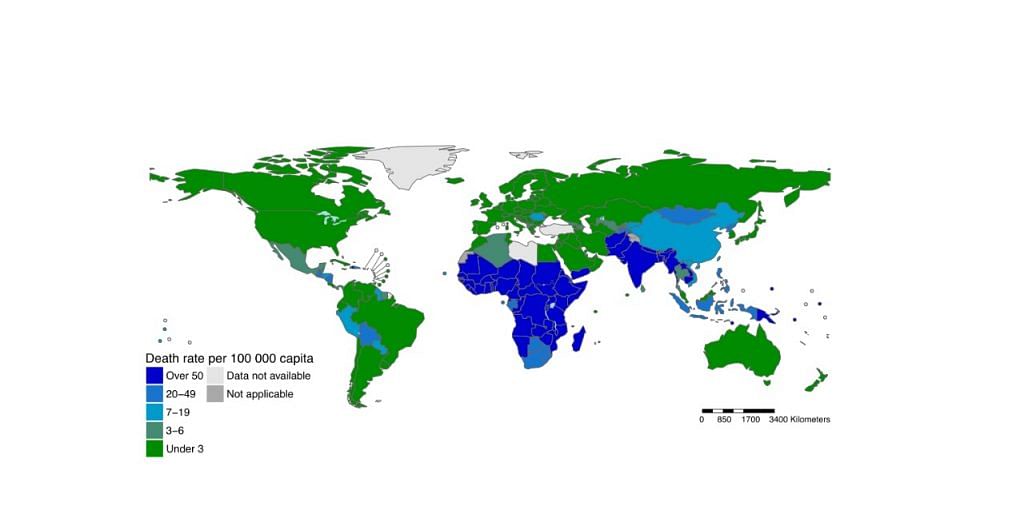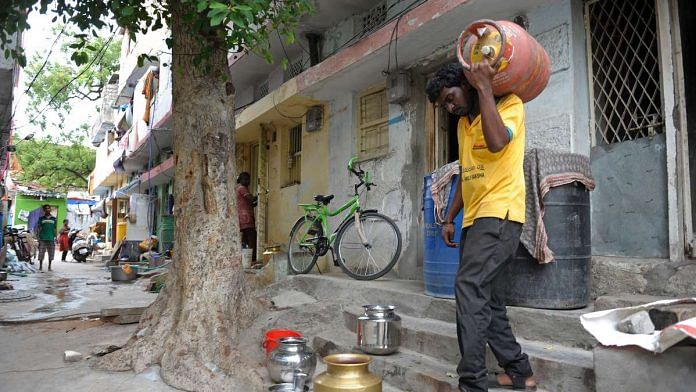According to the latest WHO report, in 2016, indoor and outdoor pollution killed one lakh children under the age of five in India.
Bengaluru: As many as 98 per cent of India’s children live with unsafe levels of pollution at home, putting them at risk of lethal diseases as well as death, a new report by the United Nations World Health Organisation (WHO) has warned.
In the report, which seeks to highlight the impact of pollution on children, the WHO has stated that household air pollution (HAP) from cooking fuel and sources of lighting that involve fire is a major contributing factor to the ill health and death of children, primarily in India.
The report is fuelled by studies collected over many years till 2016, which show several strong links between the use of biomass as a primary source of fuel and child mortality.
However, the situation of HAP appears to have improved in India since 2016, the last year the WHO report factors in.
At the time, only 56 per cent of Indian households had access to LPG and other forms of clean fuel for cooking. Today, the number is nearly 80 per cent thanks to citizen-friendly government schemes like the Ujjwala scheme.
Of the 3.2 crore new connections over the last three years, nearly 70 lakh are attributed to funding from corporate social responsibility (CSR) initiatives undertaken by state-run oil companies.
There is a strong correlation between poverty and exposure to air pollution, causing the poorer strata of society to rely more on polluting sources of energy.
Also read: These ‘green’ crackers will reduce pollution & risk on Diwali without dimming the fun
What is indoor pollution or HAP?
HAP is the air pollution caused inside the house by sources of fuel used daily for cooking and lighting purposes.
These include wood, coal, dung and kerosene, with the report also flagging tobacco as a source of pollution. The combustion of these products gives rise to particulate matter.
The most common particulate matter largely falls in two categories: PM 10 and PM 2.5, which means particles smaller than 10 and 2.5 micrometres, respectively.
PM2.5 is particularly hard to filter out, and is easily deposited in the inner linings of our body. It also enters our blood stream with ease, causing dangerous health effects like cancer and cardiovascular conditions.
The report states that at least 93 per cent of children worldwide and 98 per cent of children in India breathe in toxic air with more particulate matter than the recommended WHO limit.
According to the organisation’s guidelines, an air quality index (AQI) of 25 micrograms per cubic metre is considered the threshold for safe inhalation. Delhi’s AQI Thursday was 283.
Health effects of indoor pollution
The polluted air indoors can be much more dangerous than that outdoors, given that the walls restrict circulation.
Women, who sit on the floor to cook meals on stoves powered by dung, biomass and coal, and children are particularly susceptible to inhaling this polluted air.
Exposure to PM 2.5 indoors increases the risk of several diseases among children, especially tuberculosis, before the age of five. It has been known to cause early incidence of childhood asthma and other respiratory diseases, and strengthen the risk of mental and behavioral disorders like autism and Attention Deficit Hyperactivity Disorder (ADHD).
Exposure to air pollution is also believed to greatly increase the risk of childhood cancer, obesity and pneumonia, besides affecting one’s mental and neurological development, which leads to problems such as poor test scores, lack of coordinated motor skills, and stunting.
Also read: How to choose the right pollution mask that will help you survive Delhi’s toxic air
One study quoted in the report showed that indoor exposure to biomass fuels and tobacco increased the risk of stunting in children aged below six by 30 per cent.
Another showed that, in rural India, the risk of child mortality rose by 21 per cent thanks to HAP alone. Children born to women exposed to household pollution during pregnancy were found to be at a risk of dying within two days of birth.
Exposure to HAP increased the risk of stillbirth among Indian women by 51 per cent, said one study. It also stokes the chance of premature birth, as well as lower-than-normal birth weight. Several studies found that birth weight decreases by as much as a kilo on account of pollution.
All risks increase upon exposure to both HAP and ambient air pollution, as outdoor pollution is known.
Girls hit harder than boys
In 2016, according to WHO, the report found that one lakh children under the age of five and over 7,000 children between ages five and 14 died from air pollution in India.
At least 600,000 children died from acute lower respiratory infections caused by air pollution in 2016 around the world.

In both age groups, zero-five years and five to 14, mortality was much higher among girls than boys.
Air pollution was the leading cause of death for nearly 55,000 girls (death rate 96.6 per lakh) and nearly 47,000 boys (74.3 per lakh) under the age of five.
Over 4,000 girls (death rate 3.4 per lakh) and over 3,000 boys (2.3 per lakh) died between the ages of five and 14. Totally, the death rate in India was 84.8 per lakh among children under five, and 2.9 per lakh in the age group of five to 14.



